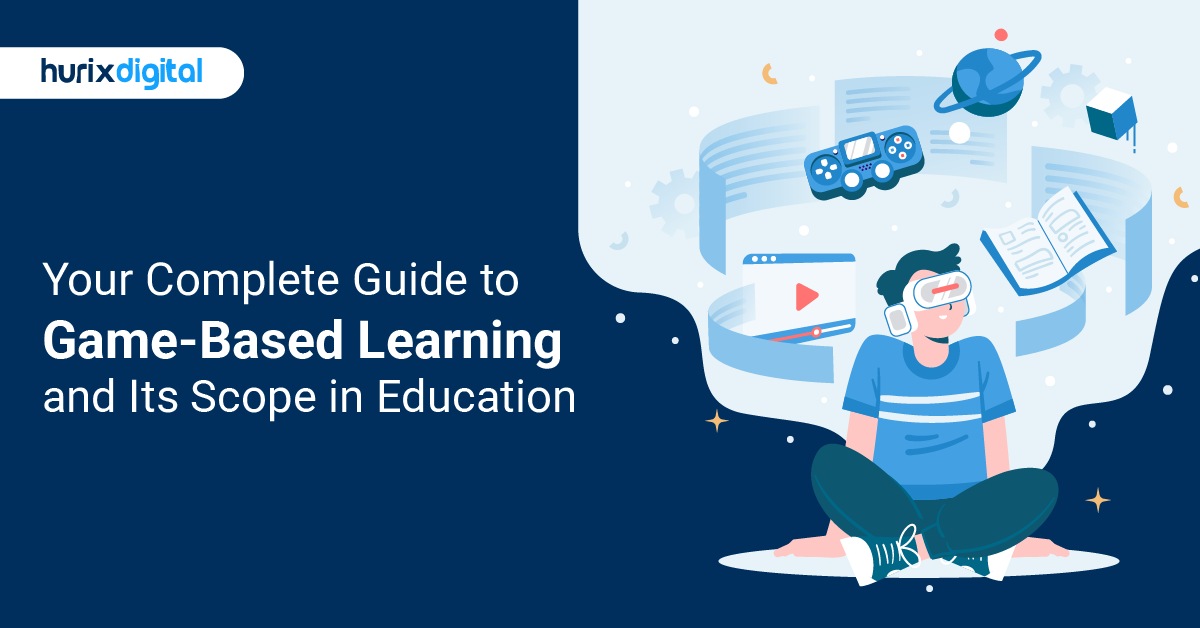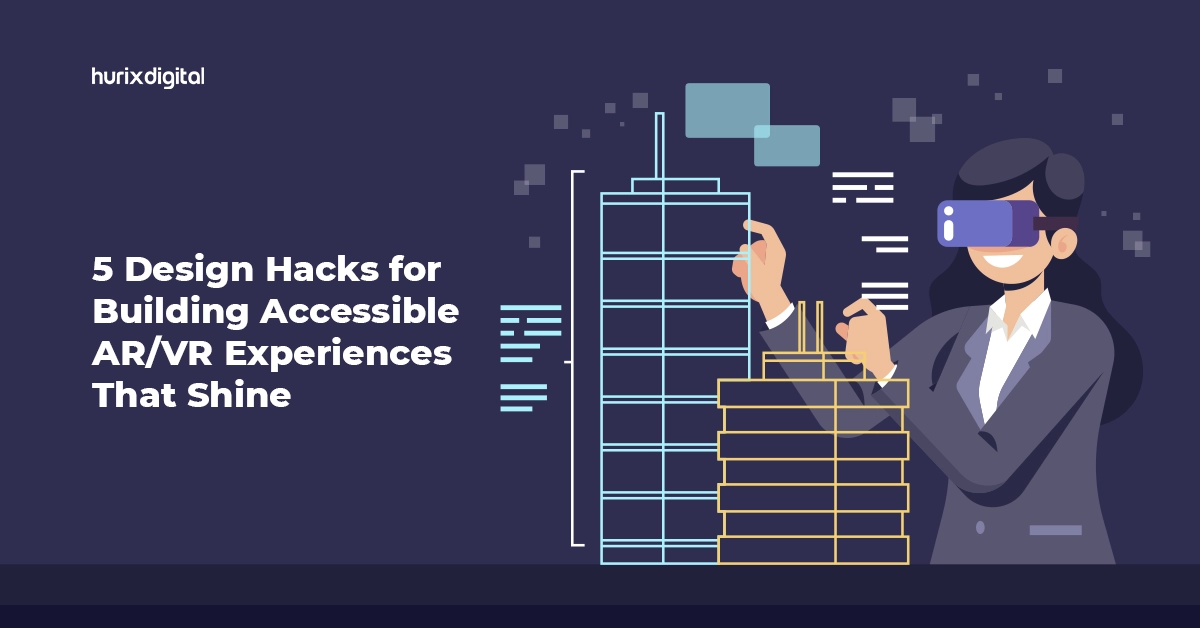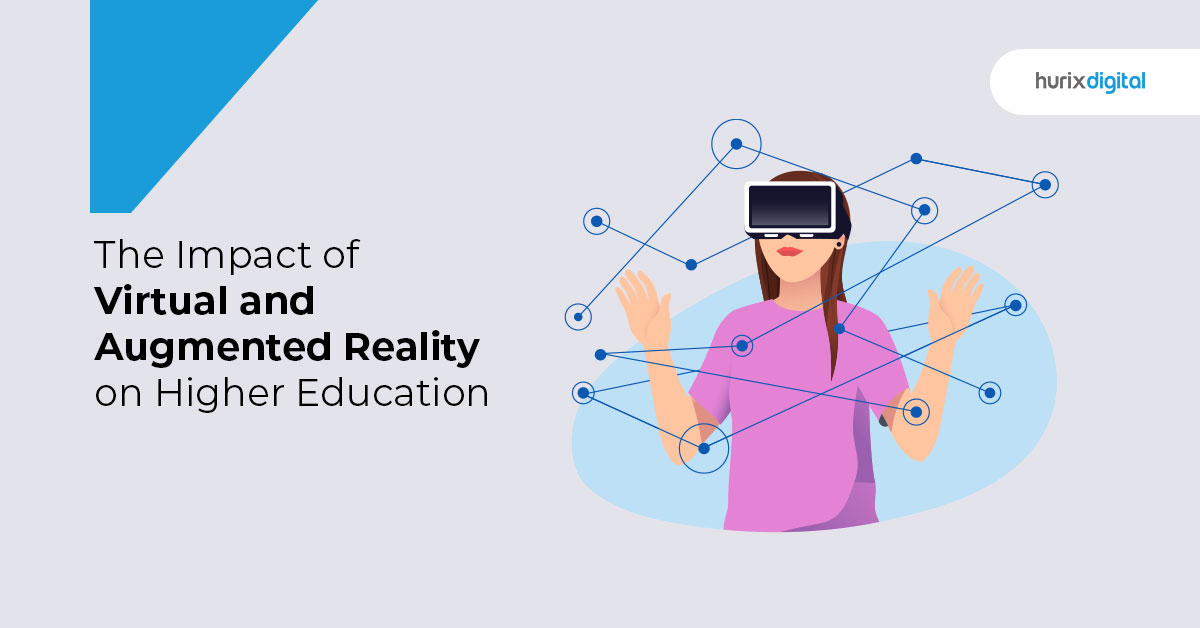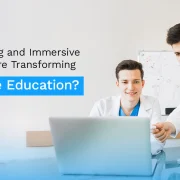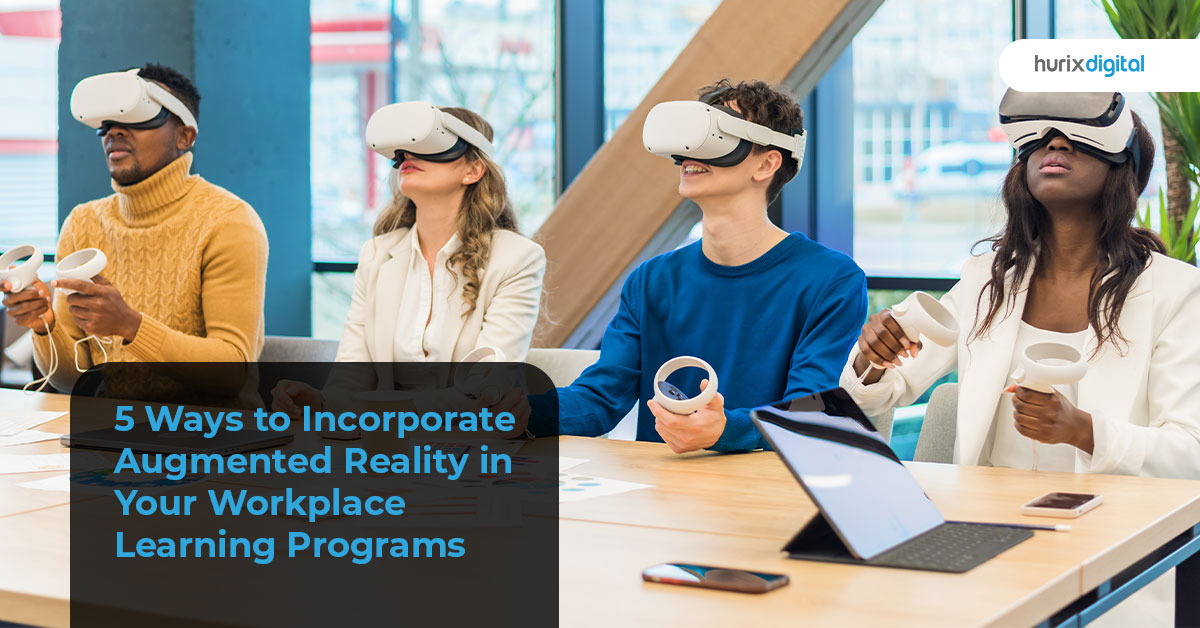
5 Ways to Incorporate Augmented Reality in Your Workplace Learning Programs
Today, competition has made learning important for most organizations in the fast-moving business world. Preparing their employees with the knowledge and skills to go ahead with their jobs is an expensive investment by companies in corporate learning solutions.
Augmented Reality is one of the emerging technologies that have gained wide acceptance in recent years, changing the way people experience activity at work and making it better for engagement, immersion, and effectiveness.
In this article, there will be different uses related to implementing the use of Augmented Reality in the training of employees and how it can bring benefits to your organization.
Table of Contents:
- What is Augmented Reality?
- Applications of AR
- Benefits of Augmented Reality in the Workplace
- In Conclusion
What is Augmented Reality?
Augmented reality is the technology that overlays digital content such as images, videos, or 3D models onto the real world to enhance the user’s perception and interactive system with his environment. These experiences are normally best felt through a variety of devices, from smartphones to tablets, smart glasses, and sometimes even headsets.
Now, the AR experience can be accessed from a wide range of devices, from smartphones and tablets to smart glasses and headsets. Applications based on AR identify objects in real space using a camera and sensors and overlay relevant digital information on them to enable interaction with a 3D model, text, or an interactive element.
Also Read: 4 Reasons Why AR Training is Improving L&D
Applications of AR
We have listed down some of the most prominent applications of Augmented Reality (AR) in training and development.
1. Employee Onboarding & Orientation
Traditional onboarding practices are long, and new employees easily become information-overloaded, which leads to low engagement. Employees can be engaged with augmented reality in the workplace through AR tours of the factories, offices, or shop floors. Instead of being taken around the workspace as guided, new workers can be left to explore on their own to get familiar with the physical space in their workplaces. You can additionally use AR to give information about equipment or machinery, such as overlaid videos, interactive guides, etc. These enhance understanding in a new employee much faster and with a much higher speed as compared to someone else.
2. Skill Development
Workforce learning often involves training on skilled tasks or procedures that require handling complex equipment or machines. AR-based skills training, when done well, is known to considerably shorten the time to competence, making it a very attractive proposition. With AR instructions overlaid within the physical work environment, employees can easily develop the skills on the job, without having to depend on a lengthy apprenticeship or shadowing. This not only enhances their learning experience but also reduces the risk of accidents or errors when handling complex and expensive equipment.
3. Performance Support
AR can also be used to provide just-in-time training or performance support. Employees can access relevant information, such as standard operating procedures, troubleshooting guides, or safety protocols, through AR-enabled devices when they need it the most. This reduces the need for printed manuals or constant supervision, enhancing the learning experience and accelerating skill development.
AR in the workplace can also provide visual cues, annotations, and step-by-step instructions overlaid onto the employee’s field of view. For example, an AR system can guide an employee through the process of assembling a complex piece of machinery by highlighting the relevant parts, displaying instructions, and providing real-time feedback on their performance. This helps them perform their tasks more effectively and efficiently, reducing downtime and improving productivity.
4. Gamified Experiences
AR can be integrated with gamified learning experiences to come up with games that may foster learning and potentially the emergence of particular skills. Gamified learning experiences may enhance employee engagement and motivation by quite a margin, thereby making the learning process better, enjoyable, and very effective.
For example, treasure hunts and scavenger hunts where the employees use AR-enabled devices to find virtual hidden objects or to solve puzzles associated with the content they have to learn may be prepared. As the employees continue forward in the game, they can earn points, badges, or rewards; therefore, they go through a sense of competition along with achievement, which makes learning enjoyable and encourages them to actively participate and retain better.
5. Remote Assistance
AR can facilitate remote assistance and collaboration, especially for distributed teams or when experts are not physically present at the employee’s location. Employees can use AR devices to share their live view with remote experts who can provide guidance, annotate the real-time video feed, and offer support and instruction from a distance. This fosters knowledge transfer and skill development, even across different geographical locations.
Also Read: Top 7 Benefits of Online Learning Platforms for Working Professionals
Benefits of Augmented Reality in the Workplace
The use of augmented reality at work in learning programs offers significant benefits, such as:
1. Cost-Effectiveness
Traditional skills development training is expensive as one will pay for trainers, rent a physical facility, and travel to the stations. Training through AR is such that most of this expense can be cut off. Once one uses digital content and virtual environments in training, one is not required to pay for a physical facility or trainers. Even more importantly, AR training is remote, meaning that an employee will not incur the costs of traveling and might work at their own pace.
2. Low Risk
Augmented reality in corporate training may significantly reduce the chances of errors or accidents. Critical industries like manufacturing or construction, as well as health care, benefit from the context of AR-based training since a safe setting affords the employees to learn, train, or exercise their skills without fear of out-of-lab injury. AR training simulates an exact real-world model within a virtual environment for the employees to develop the skills and knowledge required to execute the jobs appropriately and safely.
3. Learning Effectiveness
AR-based training can increase the effectiveness and efficiency of learning. It immediately grabs employees’ attention with immersive and interactive features that entail some form of retention of information as it is applied instantly once it is learned. Through an immersive, employee-interactive mode of learning, workers receive many forms of feedback in real-time to indicate whether something was done right or wrong. AR-based training can also be tailored to meet the unique requirements of various learners, which further ensures that all are well-trained and that they will succeed.
In Conclusion
As AR technology continues to advance, organizations are exploring the potential of augmented reality in their learning and development strategies to stay ahead in the competitive business landscape. Companies known to use Augmented Reality for training include Walmart, Boeing, UPS, Ford, and Accenture. These are just a few examples, but many other companies across different sectors are adopting AR technology to enhance their training and onboarding processes.
Implementing augmented reality as part of your corporate learning solutions may seem daunting, but with professional help from corporate training consultants, you can take your first step towards designing AR solutions customized to your organizational needs. Many AR platforms offer easy-to-use authoring tools that allow organizations to create their own AR training content without requiring extensive technical expertise.
Looking for help with deciding whether an AR-based learning program is a good fit for your employees’ learning needs? Hurix Digital is an organization that helps with your AR in workforce development needs. Connect with Hurix Digital today.



